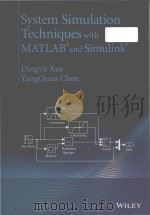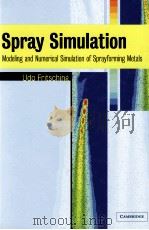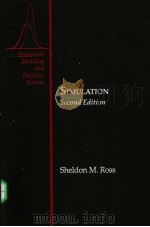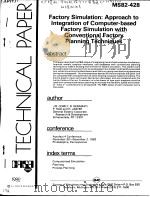《SIMULATION WITH ARENA》
| 作者 | W.DAVID KELTON RANDALL P.SADO 编者 |
|---|---|
| 出版 | 未查询到或未知 |
| 参考页数 | 547 |
| 出版时间 | 1998(求助前请核对) 目录预览 |
| ISBN号 | 0075612593 — 求助条款 |
| PDF编号 | 811791848(仅供预览,未存储实际文件) |
| 求助格式 | 扫描PDF(若分多册发行,每次仅能受理1册) |
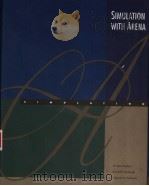
Chapter 1What is Simulation?3
1.1Modeling3
1.1.1 What’s Being Modeled?3
1.1.2 How About Just Playing with the System?5
1.1.3 Sometimes You Can’t (or Shouldn’t) Play with the System5
1.1.4 Physical Models5
1.1.5 Logical (or Mathematical) Models6
1.1.6 What Do You Do with a Logical Model?6
1.2Computer Simulation7
1.2.1 Popularity and Advantages7
1.2.2 The Bad News8
1.2.3 Different Kinds of Simulations9
1.3How Simulations Get Done9
1.3.1 By Hand10
1.3.2 Programming in General-Purpose Languages11
1.3.3 Simulation Languages11
1.3.4 High-Level Simulators11
1.3.5 Where Arena Fits In12
1.4When Simulations Are Used13
1.4.1 The Early Years13
1.4.2 The Formative Years13
1.4.3 The Recent Past14
1.4.4 The Present14
1.4.5 The Future15
Chapter 2Fundamental Simulation Concepts19
2.1An Example19
2.1.1 The System19
2.1.2 Goals of the Study20
2.2Analysis Options22
2.2.1 Educated Guessing22
2.2.2 Queueing Theory22
2.2.3 Mechanistic Simulation23
2.3Pieces of a Simulation Model24
2.3.1 Entities24
2.3.2 Attributes25
2.3.3 (Global) Variables25
2.3.4 Resources25
2.3.5 Queues26
2.3.6 Statistical Accumulators26
2.3.7 Events26
2.3.8 Simulation Clock27
2.3.9 Starting and Stopping28
2.4Event-Driven Hand Simulation28
2.4.1 Outline of the Action28
2.4.2 Keeping Track29
2.4.3 Carrying It Out31
2.4.4 Finishing Up33
2.5 Event and Process-Oriented Simulation33
2.6Randomness in Simulation35
2.6.1 Random Input,Random Output35
2.6.2 Replicating the Example35
2.6.3 Comparing Alternatives37
2.7 Overview of a Simulation Study38
2.8 Exercises40
Chapter 3 A Quick Peek at Arena43
3.1Starting Up43
3.2Browsing an Existing Model44
3.2.1 Viewing the Model Window45
3.2.2 The Arrive Module46
3.2.3 The Server Module47
3.2.4 The Depart Module49
3.2.5 The Simulate Module49
3.2.6 Module Connections50
3.2.7 Dynamic Plots51
3.2.8 Dressing Things Up52
3.2.9 Running It53
3.3Understanding What Just Happened54
3.3.1 Arena’s Modeling Orientation55
3.3.2 Launching Entities Into the Model—The Arrive Module Revisited55
3.3.3 Processing the Entity—The Server Module Revisited57
3.3.4 Leaving the Modeled System—The Depart Module Revisited58
3.3.5 Controlling the Run—The Simulate Module Revisited59
3.4 Exercises59
Chapter 4 Working with Arena63
4.1Basic Interaction63
4.2 Menus65
4.3 Toolbars68
4.4 Help71
4.5 Model Windows72
4.6 Drawing72
4.7 Printing74
4.8 Running74
4.9 Building the Simple Processing Model75
Chapter 5Modeling Basic Operations and Inputs85
5.1Model 5.1:An Electronic Assembly and Test System85
5.1.1 Developing a Modeling Approach86
5.1.2 Some New Arena Concepts:Stations,Transfers,and Pictures87
5.1.3 Building the Model89
5.1.4 Running the Model98
5.1.5 Viewing the Results99
5.2Model 5.2:The Enhanced Electronic Assembly and Test System100
5.2.1 Expanding Resource Representation:Schedules and States102
5.2.2 Resource Schedules103
5.2.3 Resource Failures106
5.2.4 Saving Statistical Data107
5.2.5 Results of Model 5.2111
5.2.6 The Output Analyzer112
5.3Enhancing the Animation116
5.3.1 Changing Animation Queues117
5.3.2 Changing Entity Pictures119
5.3.3 Changing Resource Pictures122
5.3.4 Adding Plots and Variables124
5.4Input Analysis:Specifying Model Parameters and Distributions128
5.4.1 Deterministic vs.Random Inputs129
5.4.2 Collecting Data130
5.4.3 Using Data131
5.4.4 Fitting Input Distributions via the Input Analyzer132
5.4.5 No Data?139
5.4.6 Nonstationary Arrival Processes141
5.4.7 Multivariate and Correlated Input Data142
5.5 Summary and Forecast142
5.6 Exercises142
Chapter 6 Intermediate Modeling and Terminating Statistical Analysis149
6.1Model 6.1:A Small Manufacturing System149
6.2New Arena Concepts150
6.2.1 Sequences150
6.2.2 Variables and Expressions152
6.2.3 Sets153
6.3 The Modeling Approach153
6.4Building the Model154
6.4.1 The Data Modules154
6.4.2 The Logic Modules159
6.4.3 Animation170
6.4.4 Verification173
6.5Confidence Intervals for Terminating Simulations via the Output Analyzer176
6.5.1 Time Frame of Simulations176
6.5.2 Model 6.2:Modifying Model 6.1 for a Terminating Analysis177
6.5.3 Strategy for Data Collection and Analysis180
6.5.4 Confidence Intervals for Terminating Systems182
6.5.5 Comparing Alternatives188
6.6 Summary and Forecast190
6.7 Exercises190
Chapter 7 Entiry Transfer and Steady-State Statistical Analysis197
7.1Types of Entity Transfers197
7.2 Resource-Constrained Transfers199
7.3 Model 7.1:The Small Manufacturing System with Transporters200
7.4 Conveyors211
7.4.1Model 7.2:The Small Manufacturing System with Nonaccumulating Conveyors214
7.4.2 Model 7.3:The Small Manufacturing System with Accumulating Conveyors218
7.5 Statistical Analysis of Steady-State Simulations219
7.5.1Warm Up and Run Length219
7.5.2 Truncated Replications223
7.5.3 Batching in a Single Run224
7.5.4 Automatic Run-Time Confidence Intervals via Batch Means232
7.5.5 What To Do?234
7.5.6 Other Methods and Goals for Steady-State Statistical Analysis234
7.6 Summary and Forecast235
7.7 Exercises235
Chapter 8 Detailed Modeling242
8.1Model 8.1:A Generic Call Center System242
8.2 New Modeling Issues244
8.3 Terminating or Steady-State247
8.4 Modeling Approach247
8.5 Defining the Data249
8.6 Determine Maximum Arrival Rate and Increment Time Period251
8.7 Create Arrivals and Direct to Service259
8.8 Technical Support Calls265
8.9 Sales Calls270
8.10 Order-Status Calls273
8.11 Finding and Fixing Model Errors274
8.12 Animating the Model283
8.13 Summary and Forecast291
8.14 Exercises291
Chapter 9A Sampler of Further Modeling Issues and Techniques299
9.1Modeling Conveyors Using the Transfer Panel299
9.1.1 Model 9.1:Finite Buffers at Stations300
9.1.2 Model 9.2:Parts Stay on Conveyor During Processing305
9.2 More on Transporters306
9.3Entity Reneging308
9.3.1 Entity Balking and Reneging308
9.3.2 Model 9.3:A Service Model with Balking and Reneging309
9.4Holding and Batching Entities316
9.4.1 Modeling Options316
9.4.2 Model 9.4:A Batching Process Example317
9.5 Overlapping Resources328
9.5.1System Description329
9.5.2 Model 9.5:A Tightly-Coupled Production System330
9.6A Few Miscellaneous Modeling Issues350
9.6.1 Guided Transporters350
9.6.2 Parallel Queues350
9.6.3 Decision Logic352
9.6.4 Continuous Modeling352
9.7 Exercises354
Chapter 10 Arena Customization and Integration363
10.1Model 10.1:Generating Entity Arrivals from Historical Data363
10.2Model 10.2:Recording and Charting Model Results in Microsoft R Excel367
10.2.1 An Overview of ActiveX TM Automation and VBA367
10.2.2 VBA Events at the Beginning of a Simulation Run368
10.2.3 Storing Individual Call Data Using the VBA Module372
10.2.4 Charting the Results and Cleaning Up at the End of the Run374
10.3 Model 10.3:Organizing and Creating Your Own Reports375
10.4Model 10.4:Linking To and Embedding Other Files381
10.4.1 Placing the Word File in the Arena Model381
10.4.2 Establishing a Link to the Microsoft R PowerPoint R Presentation383
10.4.3 Adding the Sound File384
10.4.4 Tagging the Arena Objects for Identification in VBA385
10.4.5 The Welcome Form386
10.5Creating Modules Using the Arena Professional Edition:Template 10.1388
10.5.1 The Create from File Module389
10.5.2 The Template Source File:Tpl_10_1.tpl390
10.5.3 The Panel Icon and User View390
10.5.4 The Module Logic and Operands391
10.5.5 Uses of Templates394
10.6 Summary395
10.7 Exercises395
Chapter 11Further Statistical Issues399
11.1 Random-Number Generation399
11.2Generating Random Variates403
11.2.1 Discrete404
11.2.2 Continuous405
11.3 Nonstationary Poisson Processes407
11.4Variance Reduction409
11.4.1 Common Random Numbers410
11.4.2 Other Methods418
11.5Sequential Sampling419
11.5.1 Terminating Models419
11.5.2 Steady-State Models424
11.6Some Additional Capabilities of the Output Analyzer427
11.6.1 Confidence Interval on Standard Deviation427
11.6.2 Compare Variances428
11.6.3 One-Way ANOVA428
11.7 Designing and Executing Simulation Experiments429
11.8 Exercises429
Chapter 12 Conducting Simulation Studies433
12.1A Successful Simulation Study433
12.2 Problem Formulation436
12.3 Solution Methodology437
12.4 System and Simulation Specification438
12.5 Model Formulation and Construction442
12.6 Verification and Validation444
12.7 Experimentation and Analysis447
12.8 Presenting and Preserving the Results448
12.9 Disseminating the Model:The Arena Viewer449
Appendix A A Functional Specification for The Washington Post453
A.1Introduction453
A.1.1 Document Organization453
A.1.2 Simulation Objectives453
A.1.3 Purpose of the Functional Specification454
A.1.4 Use of the Model454
A.1.5 Hardware and Software Requirements455
A.2System Description and Modeling Approach455
A.2.1 Model Timeline455
A.2.2 Presses455
A.2.3 Product Types457
A.2.4 Press Packaging Lines457
A.2.5 Tray System457
A.2.6 Truck Arrivals458
A.2.7 Docks459
A.2.8 Palletizers459
A.2.9 Manual Insertion Process460
Example460
A.3 Animation461
A.4Summary of Input and Output461
A.4.1 Model Input461
A.4.2 Model Output462
A.5Project Deliverables464
A.5.1 Simulation Model Documentation464
A.5.2 User’s Manual464
A.5.3 Model Validation464
A.5.4 Animation464
A.6 Acceptance464
Appendix BIIE/SM Contest Problems469
B.1 First Annual Contest:The SM Superstore469
B.2 Second Annual Contest:The SM Market471
B.3 Third Annual Contest:Sally Model’s SM Pizza Shop474
Appendix CA Refresher on Probability and Statistics481
C.1 Probability Basics481
C.2Random Variables483
C.2.1 Basics483
C.2.2 Discrete484
C.2.3 Continuous486
C.2.4 Joint Distributions,Covariance,Correlation,and Independence488
C.3 Sampling and Sampling Distributions491
C.4 Point Estimation492
C.5 Confidence Intervals493
C.6 Hypothesis Tests495
Appendix D Arena’s Probability Distributions501
Beta501
Continuous502
Discrete504
Erlang505
Exponential506
Gamma507
Johnson508
Lognormal509
Normal510
Poisson511
Triangular512
Uniform513
Weibull514
Appendix E Academic Software Installation Instructions517
E.1Authorization to Copy Software517
E.2 Installing the Arena Software517
E.3 System Requirements518
E.4 Floppy Disks518
References523
References523
Index529
Index529
1998《SIMULATION WITH ARENA》由于是年代较久的资料都绝版了,几乎不可能购买到实物。如果大家为了学习确实需要,可向博主求助其电子版PDF文件。对合法合规的求助,我会当即受理并将下载地址发送给你。
高度相关资料
-
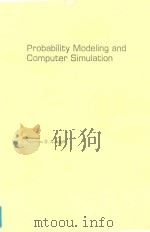
- Probability modeling and computer simulation : an integrated introduction with applications to engin
- 1988 PWS-Kent Pub. Co.
-

- Mind games : explorations into the mental arena of sport
- 1998 Beckett Parkway
-
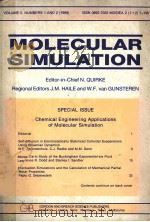
- MOLECULAR SIMULATION
- 1989 GORDON AND BREACH SCIENCE PUBLISHERS
-

- THE DARK ARENA
- 1985 BANTAM BOOKS
提示:百度云已更名为百度网盘(百度盘),天翼云盘、微盘下载地址……暂未提供。➥ PDF文字可复制化或转WORD



